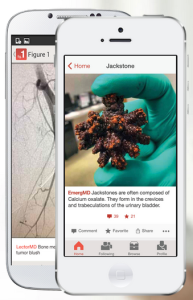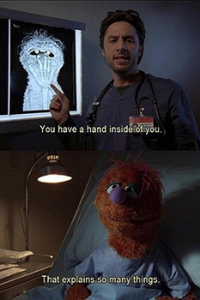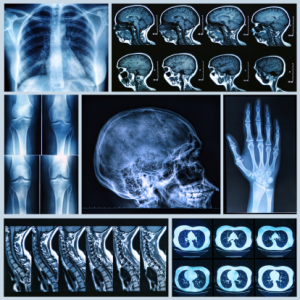Social media is driven by the human urge to share information. Anything, from cute puppies to all out weird anime is posted everyday, and opened up to be liked, ignored, or discussed. Users on multiple platforms will post questions online, hoping that someone, somewhere in the world will see it and be able to provide them an acceptable answer. In the same vein, doctors share their patients’ cases with their colleagues to get advice, as well as to share information for learning and diagnosis purposes.
Josh Landy, an intensive care specialist at Scarborough Hospital in Toronto, Canada, saw the demand for visual sharing among doctors while watching his medical students. If they were running into difficulties with a diagnostic, his students didn’t resort to their stethoscopes – they whipped out their smart phones. Rather than rely on only their opinion, his students would virtually share their case images, and then solicit others’ opinions. Instead of settling for a second opinion, students were able to acquire third, fourth, fifth and more opinions, all with a simple “share.” Rather than tell his students off for using a phone, Landy recognized the need for doctors to seek external opinions when working with a variety of patients. Landy decided that the medical world was overdue for a tool to easily share cases, and set about righting that deficiency.

Now, thanks to Landy’s photo-sharing app, Figure-1, healthcare professionals can easily share their images with an entire community of medics.
For those who might be worried about patients privacy being compromised with the app, you can breathe easy. Any identifying features such as name, numbers, or case information is removed from the image before it is uploaded. In addition, every image has to undergo additional verification before it becomes publicly available. But, patients still have the actual say: in order for an image to be shared, the patients pictured have to give their permission. While the app’s purpose is to share information, Landy insists that patient approval and ethics are the foundation for its technology.
Even without Figure-1, Landy states that doctors and medics are already sharing cases through email and text. What Landy’s app does is make that process easier, safer, and faster. Even for those involved who are not uploading cases, the app still visually presents them with medical information, that they might not otherwise see.
 Sheryll Shipes of the Texas Christus Spohn Hospital Corpus Christi-Memorial is a strong advocate for the app. As reported in CNN, Shipes credits the app with helping her solve an unusual case. A patient came to her who had a skin disorder causing blisters on certain parts of their body. Because it was unusual, Shipes uploaded a picture to Figure-1, to see if anyone in the community had advice for how to treat it. Sure enough, someone knew exactly what it was. As it turns out, the condition is common in Asia and Latin America, but in the US it is very rare. As Shipes stated, “We would never have known that one.”
Sheryll Shipes of the Texas Christus Spohn Hospital Corpus Christi-Memorial is a strong advocate for the app. As reported in CNN, Shipes credits the app with helping her solve an unusual case. A patient came to her who had a skin disorder causing blisters on certain parts of their body. Because it was unusual, Shipes uploaded a picture to Figure-1, to see if anyone in the community had advice for how to treat it. Sure enough, someone knew exactly what it was. As it turns out, the condition is common in Asia and Latin America, but in the US it is very rare. As Shipes stated, “We would never have known that one.”
It is estimated that there are more than 150,000 users of the app across the 19 countries where it is available. Roughly thirty-percent of US medical students (including Shipes) now use the app, and Landy hopes that number will only grow. Having witnessed a host of cases being shared between doctors via smart-phones, Landy hopes that his app will build not only a stronger community within individual hospitals, states, and countries, but will become a “global knowledge notebook” to help solve “mystery” cases.
Finally, while there are some people in the general public who might have interest in medical images, sorry, but “no dice.” Landy stresses how it is crucial for his tool to target those working in healthcare, which is why the only users who can upload or comment on images, are healthcare professionals. Even if you didn’t work in healthcare, and tried to register yourself, you will have to enter occupational information. If you just have to see some “medical images,” try re-watching “House” or “Scrubs”. You will have better luck there.
Source: CNN


